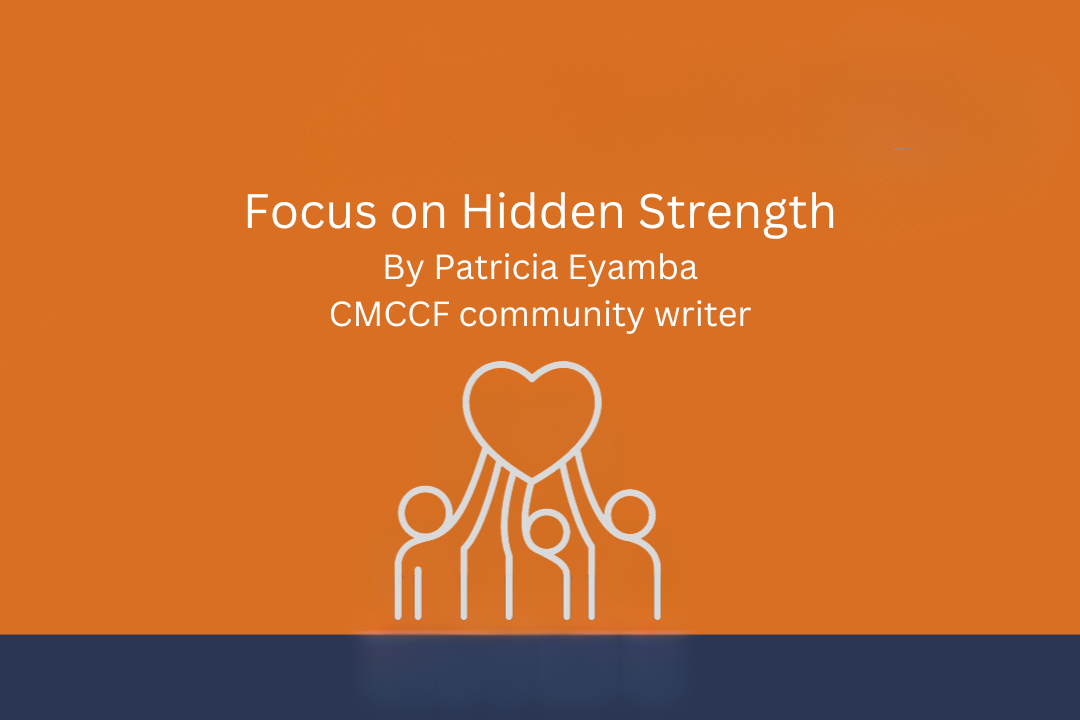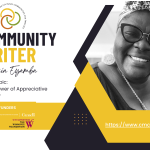
“There is no power for change greater than a community discovering what it cares about.” These are the words of Margaret J. Wheatley, the American writer, teacher, speaker and management consultant who works to create organisations and communities worthy of habitation. For any community to discover her soul, one of the ingredients is to be aware of their strength. Hence, the importance of recognizing and nurturing the hidden strengths within our communities cannot be overemphasised.
More importantly, the knowledge of these potentials builds confidence and fortifies individuals within the community. Similarly, a community conscious of its strengths walks in the consciousness of collective strength. Unfortunately, at times, our most exceptional gifts are the ones we least expect, patiently waiting to be discovered. The waiting period to uncover these potentials can be painful, representing vulnerable times for a people or a community. Unveiling these hidden strengths is the journey of empowerment for cultural communities in Manitoba. This journey is embarked through collaborative formal and informal meetings led by the Coalition of Manitoba Cultural Communities for Families (CMCCF).
The coalition has been consulting with individuals and holding meetings with different cultural communities. In these meetings, participants and organizers get to learn that the strength of a cultural community lies not only in the preservation of traditions but also in the ability to share narratives that transcend cultural boundaries. As CMCCF’s ethno-cultural project keeps unfolding, organizers and participants continue to uncover series of hidden strengths within the community that were not immediately apparent but played a crucial role in the project’s success. The realization that cultural communities possess rich cultural stories of resilience is an “aha” moment.
Community representatives and participants at these meetings shared tales of overcoming adversity, passing down profound resilience that became the driving force behind their success. Communities share stories of how they faced challenges and drew strength from their cultural roots, ensuring the sustainability of common projects within their domain. This spoke volumes to organizers—resilience and self-determination are the fuel to achieving common goals regardless of obstacles, unfortunately, most communities are not aware they possess such strength or maybe it is trivialised.
Different methodology is adopted in running these meetings, some of them include but not limited to small group work, formal presentations, interview style, brainstorming amongst other.
In one of the group sessions, communities talked about their close-knitted nature, revealing intricate networks of relationships that extend beyond their obvious connections. These informal networks are vital for effective communication, ensuring that information is shared within the community units, fostering a sense of unity, transparency and collaboration.
In another group session participants maintained that elders held the treasure trove of wisdom accumulated over generations. Their insights guided decision-making within their communities, offering perspectives that went beyond immediate concerns. They claim that this wisdom is a beacon, steering their community toward long-term success. Within cultural communities, families were not just neighbors; they were interconnected through shared histories and experiences. Project organizers tapped into these connections to foster collaboration, creating a sense of belonging that made community members feel personally invested in the project’s outcomes—these are key ingredient strengths.
The various cultural backgrounds brought forth a mosaic of skills and perspectives. This diversity became a wellspring of innovation, allowing groups to address challenges with creative and comprehensive solutions. The intimate knowledge of history, geography, and social dynamics held by the community was invaluable. It is believed that local knowledge within communities serves as a guide, ensuring that communities are not only effective but also deeply rooted in their identity.
While not holding formal titles, generally, respected figures emerged as natural leaders. Recognizing and empowering these individuals amplified community engagement, making decisions/actions more responsive to the needs and desires of the people. Also, the group work revealed that storytelling was more than just a form of entertainment; it is a powerful means of communication. Utilizing oral tradition enhanced community engagement, making information more accessible and relatable. Traditional art forms, practices, and rituals are considered more than cultural expressions—they are assets. Recognizing and valuing these assets enriched communities, creating components that were not only unique but also deeply meaningful to the community.
Another significant lesson learned during these sessions is knowing that communities encourage collaboration between different group thereby creating a bridge between the wisdom of the elders and the aspirations of the youth. This inter-generational collaboration ensures a holistic approach that considers the community’s past, present, and future.
The recognition and leverage of these strengths not only enriched communities but also fostered a sense of pride and ownership within the community. The result is not just a testament to the resilience, wisdom, and interconnectedness of communities but also the strong identity of our immigrant communities. But often these hidden strengths are the pillars supporting cultural communities in Manitoba.
The question arises: why are these strengths considered hidden when they are being demonstrated daily? What can be done differently to bring this consciousness to the fore? What would have been done differently if communities are aware of their strengths? These are million-dollar questions yet to be answered.
CMCCF is working hard to respond to these questions. CMCCF has stepped in to collaborate with cultural communities in Manitoba, aiming to enhance their capacity in policy development and implementation. While transforming the dynamics of policy development is a formidable task, CMCCF believes in starting with small, impactful steps. CMCCF has initiated a process of gathering communities to unveil their hidden strengths, providing a platform for diverse cultural voices. The goal is to empower communities to plan for the future, influencing policies that directly affect them. The objective is to encourage policymakers to sit at the same table, allowing the echo of these hidden strengths to resonate.
Given Manitoba’s reputation as one of the provinces with significant diversity, the challenge is to ensure that government services are not merely diverse but truly inclusive. CMCCF is committed to embarking on this journey, focusing on building capacity, amplifying voices, and promoting self-realization through a JEDI (Justice, Equity, Diversity, and Inclusion) lens. The movement, initiated by Steve and Martin, unfolds like an onion peel game, revealing layers of hidden strengths. Although these are small wins, they mark the beginning of a transformative process. One such celebration is the demonstration of these strengths during group discussions in these meetings.
Indeed, hidden strengths are a mighty arrow in the hands of cultural communities. When properly harnessed, cultural communities will utilise them for their members and community at large.

This article was written by community writer Patricia Eyamba as part of our J.E.D.I. Initiative – Community Writers Project. All thoughts and opinions expressed are Patricia’s own.
To learn more about our Intercultural and Intergenerational Diversity and Inclusion Engagement Project, go to our J.E.D.I. Initiative landing page here.

 Previous Post
Previous Post Next Post
Next Post